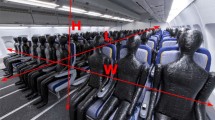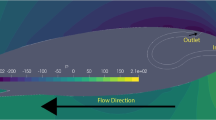Abstract
Highly efficient conditioning of the air supplied to the test vehicle is a vital task of an altitude test facility (ATF). The time needed to achieve stable conditions as well as the required amounts of energy and other supplies to achieve those conditions are means to measure the effectiveness of the ATF operation. Optimizing the operation of single facility components only delivers local optima but not a total operational optimum. Hence, the optimized operation of highly interlinked groups of components delivering a defined functionality has to be achieved. A thorough understanding of the operational characteristics of the components is a prerequisite for such an optimization. The complex systems required for cooling the air supplied to test vehicles down to high-altitude temperature conditions is an example for such a complex optimization task. In a first step, the operational envelope of one of the Stuttgart ATF air coolers has been characterized experimentally. This included the analysis of the startup procedures. A new measurement setup to determine the dew point within the Stuttgart University Altitude Test Facility has been implemented for this purpose. Experiments were conducted to measure the dew point using a precise hygrometer. A radial traversing system was implemented to enable measurements at different positions downstream of the air cooler. Since the determination of the dew point takes place in a wide temperature range, a probe for sampling and conditioning of the air was developed. The measured data are of high quality. The achieved results form the basis of the operational optimization of the Stuttgart ATF air cooler system.










Similar content being viewed by others
Notes
The dew point below \(0\,^{\circ }\text {C}\) is denoted as frost point. The distinction is omitted here due to easier readability.
Abbreviations
- \(S_\mathrm{{w}}\) :
-
Water extraction quality
- \(\dot{m}\) :
-
Mass flow
- \(p_\mathrm{{s}}\) :
-
Static pressure
- \(p_\mathrm{{t}}\) :
-
Total pressure
- \(\varDelta p\) :
-
Pressure difference
- R :
-
Specific gas constant
- t :
-
Time
- T :
-
Temperature
- \(T_\mathrm{{D}}\) :
-
Dew point
- v :
-
Stream velocity
- x :
-
Mixing fraction
- \(\phi \) :
-
Relative humidity
- \(\rho \) :
-
Air density
- 0:
-
Inlet air cooler
- 1:
-
Exit air cooler
- a:
-
Air
- ex:
-
Extracted
- i:
-
Ice
- id:
-
Ideal
- l:
-
Liquid
- sat:
-
Saturation
- w:
-
Water
References
Köcke, S.: Simulation eines Höhenprüfstands zur Untersuchung der Verdichter-Pumpverhütungs-Regelung. Ph.D. Thesis, Universität Stuttgart (2010)
Weisser, M.: Grenzen des manuellen und geregelten Betriebs am Höhenprüfstand der Universität Stuttgart, 1st edn. Verl. Dr. Hut, München (2015)
Wernecke, R.: Industrielle Feuchtemessung: Grundlagen, Messmethoden, technische Anwendungen. Wiley-VCH, Weinheim (2003)
Hinds, W.C.: Aerosol Technology: Properties, Behavior, and Measurement of Airborne Particles, 2nd edn. Wiley, New York (1999)
Vaisala: HMT330 series humidity and temperature transmitters, data sheet. https://www.vaisala.com/sites/default/files/documents/CEN-G-HMT330-Datasheet-B210951EN.pdf (2017). Accessed 24 Feb 2018
Langeheinecke, K., Kaufmann, A., Langeheinecke, K., Thieleke, G.: Thermodynamik für Ingenieure, 10th edn. Springer, Wiesbaden (2017)
Murphy, D.M., Koop, T.: Review of the vapour pressures of ice and supercooled water for atmospheric applications. Q. J. R. Meteorol. Soc. 131(608), 1539 (2005). https://doi.org/10.1256/qj.04.94
Author information
Authors and Affiliations
Corresponding author
Additional information
Publisher's Note
Springer Nature remains neutral with regard to jurisdictional claims in published maps and institutional affiliations.
Rights and permissions
About this article
Cite this article
Barth, F.M., Staudacher, S. Dew point measurement at the Stuttgart University ATF. CEAS Aeronaut J 11, 441–447 (2020). https://doi.org/10.1007/s13272-019-00419-9
Received:
Revised:
Accepted:
Published:
Issue Date:
DOI: https://doi.org/10.1007/s13272-019-00419-9




